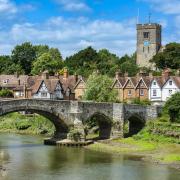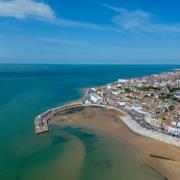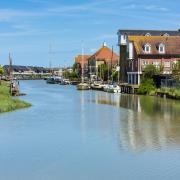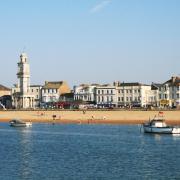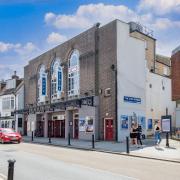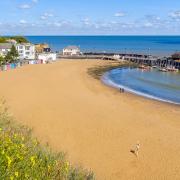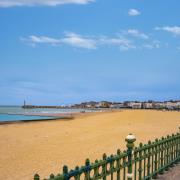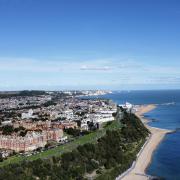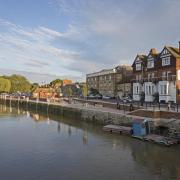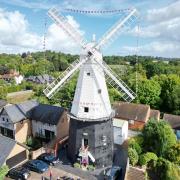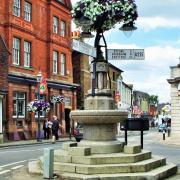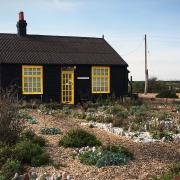Admired by ancient royalty, set on a peaceful creek and packed with all kinds of attractions for modern visitors, we explore the historic streets of Faversham

History
This ancient town has played a role in many of Kent's important stories over the years. Valued for its useful location, set on a sheltered creek with easy access to the Thames estuary and out to sea, the area had already been settled before the Romans formed a town there around 50AD.
Many Roman ruins have been found, and a huge outdoor auditorium was uncovered as recently as 2012.
Later it would go on to become a town of great importance to the Saxon kings of Kent. It was first mentioned in a charter of 811AD, where it was described as 'the King's town', and evidence has been found to suggest it was the kingdom's summer capital.
By the time the Domesday Book had been written, it was already an established centre for trade and was one of only 42 towns in England to have held a market at the time. In 1148 it would expand again, thanks to another royal fan.
King Stephen of England founded an abbey in Faversham, which was a major feature of the town until it was destroyed during the Dissolution.
But it's for trade that Faversham is probably best known. With good access to the sea at the time, it became an important port in the Middle Ages, and was recruited as a 'limb' of the Cinque Port of Dover.
The nearby iron and wool industries relied on Faversham to transport their goods and the town also became famous for its shipbuilding.
The manufacture of explosives was a somewhat surprising local trade, which lasted from the 16th century until the final gunpowder factory closed in the 1930s.

During the 1800s the increase of housing in London saw the creation of brickfields along this stretch of coast, with the iconic Thames Sailing Barges transporting huge shipments of bricks upriver.
Arguably the town's most famous industry, beer brewing was started locally by the monks of the abbey in the 1100s. Hops were a major local crop and Britain's oldest brewer, Shepherd Neame, was established in the town in 1698. The company still calls Faversham home today.
With this rich history, it's no surprise the town centre is said to have more listed buildings than anywhere in England - with around 500. A conservation area preserves the architectural heritage of Abbey Street, Tanners Street, West Street and more.
The Guildhall in Market Place is the focal point of the town centre and was originally the market hall. Built up on columns, its open ground-floor arcade has been used by traders for more than 500 years.
Best bits
The town continues to attract visitors to its historic markets. Its Charter Market runs on Tuesdays, Fridays and Saturdays and there are two monthly speciality markets: Best of Faversham Arts, Crafts and Food on the first and third Saturday of the month, and Faversham Antiques and Vintage Market on the first Sunday of the month.
Other attractions in the town include the Shepherd Neame brewery and visitor centre, the Kent Police Museum, Faversham Pools (which include one of the county's only open-air seasonal swimming pools), the Fleur de Lis Heritage Centre and the very retro Royal Cinema.

Nearby is Brogdale, home of the national fruit tree collection, which puts on regular events throughout the year. This April it will it will be hosting a weekend of Easter fun for families (10-12 April), as well as its popular Japanese Hanami Festival, where picnics are enjoyed under the blossom of cherry trees (18 and 19 April).
And if you're looking for an historic home and gardens to explore, head to Belmont House in Throwley. The gardens are open year round but the house reopens after its winter closure on 5 April.
Much of the area south of Faversham is in the North Downs AONB, while to the north are nature reserves and Sites of Special Scientific Interest.
Walkers can enjoy the local stretch of the Saxon Shore Way and the Kent Wildlife Trust nature reserve at Oare Marshes is a wonderful wild spot to explore. The important habitat is a great place to spot migratory, overwintering and breeding wetland birds, and consists of grazing marsh with freshwater dykes, open water scrapes, reedbed, saltmarsh and seawall. For more open space, visit Oare Gunpowder Works Country Park.
The site of one of the old gunpowder factories, it's now a park with walking trails leading between the ruined buildings and a visitor centre exploring its history.
Events
This busy community holds a number of annual events, attracting both locals and visitors. Faversham Literary Festival kicks off the events calendar each February and this year saw big name authors including Will Self and Michael Rosen.
May brings the popular Faversham Festival of Transport (16 and 17 May), with its hundreds of vintage vehicles displayed throughout the town centre and free vintage bus rides.
The history and culture of the area is celebrated each year with the enormous Faversham Hop Festival (5-6 September).
Other events include Faversham Doggy Day (31 May), A Midsummer Night's Feast (27 June), Faversham Food Festival (25-27 September) and Faversham Carnival (17 October).
Shopping and eating
Take a bit of time out to browse the many little shops in this pretty town. Some favourites are Creekside Vinyl record shop, Barley Mow gift shop, All Stitched Up, The Hobby Shop, E Street Music, Creek Creative studio and Top Hat & Tails.
The converted warehouses of nearby Standard Quay are home to all sorts of little independent businesses, including Aladdin's Loft, Quayside Fireplaces, Salt & Spice, The Butcher of Brogdale, Meadowlarks, Victoria Grace Bridal and the Secret Garden Café. Visit The Tiddly Pomme drinks shop at Brogdale for locally made ciders, wines, juices and other gifts.
Eat out at Read's Restaurant, The Yard, Posillipo, The Carriage Restaurant at The Railway Hotel, The Sun Inn, Cosgrove's, The Albion Taverna, The Hot Tin café, the café at Creek Creative and Havishams Coffee House.
Don't miss Macknade Fine Foods, the south-east's leading food hall, whose managing director Stefano Cuomo was named our Kent Life Food & Drink Hero at the 2019 Awards ceremony last November.
There are dozens of ancient pubs in the Faversham area, as well as places like micropubs The Corner Tap and Furlongs Alehouse and wine shop/tasting bar Vino.
In the surrounding villages, try The Dove at Dargate and The Dairy at Boughton-under-Blean. The Three Mariners at Oare was recently named our Pub of the Year at the 2019 Kent Life Food & Drink Awards.
Property prices
Faversham has been attracting a lot of attention in recent years. New families have moved into the area, boosting the population and raising property prices. Expect the current market to start at around £170,000 for a one-bedroom flat, with two-bed terraced houses priced from £210,000. Three-bed semi-detached homes are on the market for anything from £270,000 to £520,000. Larger properties are available right up to £950,000.
__________




